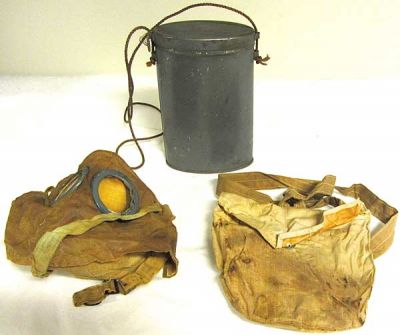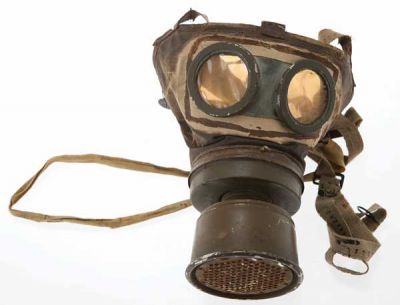Masks throughout history
If ever there was one object symbolizing the corona virus pandemic currently afflicting the world, then the mask certainly is it, as that became essential in the battle against covid-19. However, the use of a mask as a barrier against inhalation of toxic substances is not new. An overview.
Masks on stage
Masks have held an important place in the evolution of our civilisation since Antiquity. They initially had funerary functions. In the Egyptian necropolises and the graves of Mycenae a simple gold leaf was used to sculpt the faces of the dead and keep their features intact. The mask was later made out of light materials such as bark, leather or waxed cloth and appeared on stage. Masks in black velvet or satin were produced in Venice. During the Renaissance, masks were popular all over Europe, especially because of the Italian Comedia dell’Arte. Our present-day carnival masks draw from these. With masks being used in parades, on stage, for dancing or for Halloween, each and everyone of us has already worn one. However, in the course of history, masks were also used for very a different purpose: protection.
Masks as protection
The first protective masks appear in the Roman Empire and are then made out of animal bladders. They are used by miners who wish to protect themselves against toxic fumes. The same device is used in workshops producing red lead.
In the 16th century Leonardo da Vinci adapts the idea and suggests using masks drenched in water to protect seamen in case of chemical attacks during sea battles.
Between the 14th and 18th centuries Europe has to face several plague epidemics. The surgeons then think the disease spreads through the nose and mouth. In 1619 Charles de Lorme, Louis XIII’s first physician, imagines a beaked mask made out of boiled cardboard with two breathing holes. To increase its efficiency the beak is filled with disinfectant products such as dried flowers, aromatic herbs, spices or camphor.
As of the 18th century (with the Italian Bernardino Ramazzini, the forerunner of occupational medicine and true founding father of professional hygiene) and especially during the Industrial Revolution, attention is increasingly drawn to all trades dealing with toxic substances. Labourers working in insalubrious marshes are advised to cover their faces in gauze. People working with pigments, plaster, feathers or wool are to wear a moist sponge or a tightly woven cloth shaped into a hollow cone over the nose and mouth. Drenching the device in vinegar or limewater is supposed to protect glue manufacturers, waste removers, gravediggers or even hospital staff.
By the end of the 19th century the German physician Carl Flügge suspects diseases are transmitted through saliva and pleads with his colleagues to wear masks during surgery. Surgeon Paul Berger of the Tenon Hospital in Paris seems to have been the first one to don such a mask in October 1897. Today, the item is key in all operation theatres.
Gas masks in the Great War
The First World War sees the use of a new weapon: combat gas. These range from irritating tear gas to deadly asphyxiants. The aim is clear: killing on a massive scale. On 22 April 1915 the Germans send gas clouds over the British troops and the fumes also reach Belgian and Canadian soldiers deployed in Ypres. This chemical warfare is a characteristic element of the First World War. An estimated 4% of deadly casualties are claimed by gas.
A week after the German gas attack, protective masks appear at the front. The first ones are mere gauze compresses drenched in sodium hyposulphite. They are easy to produce, but also quite ineffective. They are then replaced by facemasks and in 1918 by ARS masks with carbon filters (ARS = appareils respiratoires spéciaux or special breathing devices). In 1940 all armies and European populations are largely equipped with them.
Surgical masks
The triple-folded surgical or hygiene mask is a single-use mask meant to limit the spread of bacteria and viruses from the mouth, nose and airways of the person wearing it by holding the respiratory droplets in an non-woven and sometimes waterproof filter. The mask largely diminishes contamination.
This type of mask is worn by healthcare professionals in order to protect the sterile operating area and to prevent patient infection.
Although not designed for that specific purpose, such masks are also worn as a protection against air pollution or against various contagious diseases such as covid-19. Their widespread use engendered a worldwide shortage, one of the major issues in this corona virus pandemic.
The surgical mask is not a respiratory device and cannot be certified as such. Other comparable masks are the FFP1 dust masks, the FFP2 and FFP3 medical masks and “barrier” masks meant for the public.





